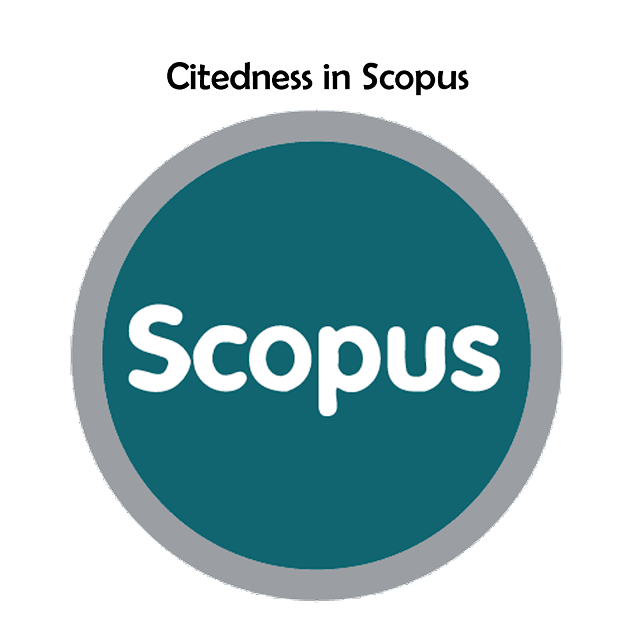Diabetes Mellitus Early Detection Simulation using The K-Nearest Neighbors Algorithm with Cloud-Based Runtime (COLAB)
Mohamad Jamil(1*); Budi Warsito(2); Adi Wibowo(3); Kiswanto Kiswanto(4);
(1) Universitas Khairun
(2) Universitas Diponegoro
(3) Universitas Diponegoro
(4) Universitas Diponegoro
(*) Corresponding Author
AbstractDiabetes Mellitus is a genetically and clinically heterogeneous metabolic disorder with manifestations of loss of carbohydrate tolerance characterized by high blood glucose levels as a result of insulin insufficiency. Public knowledge of diabetes mellitus 39.30% is influenced by public health education and information about diabetes mellitus that the public has ever received. Early detection of diabetes mellitus can prevent the development of chronic complications and allow timely and rapid treatment. The aim of this study is to simulate the early detection of diabetes mellitus with the K-Nearest Neighbors (K-NN) algorithm using Cloud-Base Runtime (COLAB). The highest accuracy is 76% in K=3, the highest precision is 68% in K=3 and the highest recall is 60% in K=3. The researchers used K-NN as a method to classify data from the Pima Indians Diabetes Database and obtained a fairly good accuracy value of 76% with a value of k = 3. KeywordsClassification; COLAB; Diabetes; K-Nearest Neighbors
|
Full Text:PDF |
Article MetricsAbstract view: 698 timesPDF view: 292 times |
Digital Object Identifier https://doi.org/10.33096/ilkom.v15i2.1510.215-221 https://doi.org/10.33096/ilkom.v15i2.1510.215-221
|
Cite |
References
E. Irawaty, N. Hendry, P. Sunardi, and F. Muatiara, “Skirining Faktor Risiko Penyakit Diabetes Melitus sebagai Upaya Pencegahan di Kelurahan Tomang Jakarta Barat pada masa Pandemi COVID 19,” pp. 889–896, 2020.
V. Agustina et al., “Deteksi Dini Penyakit Diabetes Melitus,” Magistrorum Sch. J. Pengabdi. Masy., vol. 02, no. 02, pp. 300–309, 2021.
Erlin, Y. N. Marlim, Junadhi, L. Suryati, and N. Agustina, “Early Detection of Diabetes Using Machine Learning with Logistic Regression Algorithm,” J. Nas. Tek. Elektro dan Teknol. Inf., vol. 11, no. 2, pp. 88–96, 2022.
F. Alaa Khaleel and A. M. Al-Bakry, “Diagnosis of Diabetes using Machine Learning Algorithms,” Mater. Today Proc., no. xxxx, 2021, doi: 10.1016/j.matpr.2021.07.196.
R. Sofiana, “Sistem Deteksi Dini Diabetes Mellitus menggunakan Jaringan Saraf Tiruan Backpropagation Dengan Optimasi Adaptive Learning Rate dan Momentum,” pp. 1–10, 2016.
P. Permatasari and N. Fajrin, “Perbedaan Pengetahuan dan Sikap Deteksi Dini Diabetes Melitus Sebelum dan sesudah diberikan Promosi Kesehatan di Wilayah Kerja Puskesmas Pasar Rebo,” J. Ilm. Kesehat. Masy. Media Komun. Komunitas Kesehat. Masy., vol. 12, no. 2, pp. 56–61, 2020, doi: 10.52022/jikm.v12i2.61.
N. L. P. S. A. Pancawati and D. Santi, “Pengaruh Pendidikan Kesehatan Terhadap Pengetahuan Deteksi Dini DM pada Masyarakat di Pedukuhan Ngemplak Karang Jati Kelurahan Sinduadi Mlati Sleman Yogyakarta,” J. Keperawatan Respati, vol. 3, no. 1, pp. 24–34, 2016, [Online]. Available: http://nursingjurnal.respati.ac.id/index.php/JKRY/article/view/171
M. A. Nur, “Pendekatan Teknik Data Mining Pada Pusat Data Kesehatan Nasional Menggunakan Map Visualization,” J. IT Media Inf. STMIK Handayani Makassar, vol. 14, 2016.
I. W. Gamadarenda and I. Waspada, “Implementasi Data Mining untuk Deteksi Penyakit Ginjal Kronis (PGK) menggunakan K-Nearest Neighbor (KNN) dengan Backward Elimination,” J. Teknol. Inf. dan Ilmu Komput., vol. 7, no. 2, p. 417, 2020, doi: 10.25126/jtiik.2020721896.
Parul Sinha and Poonam Sinha, “Comparative Study of Chronic Kidney Disease Prediction using KNN and SVM,” Int. J. Eng. Res., vol. V4, no. 12, pp. 608–612, 2015, doi: 10.17577/ijertv4is120622.
I. M. F. Actor et al., “I j m e r,” vol. 514, no. 2, pp. 36–39, 2021.
M. Farrel Nur Rilwanu, H. Taufikurachman, dan Faris Huwaidi, R. Perangkat Lunak, and K. Daerah Cibiru, “Penerapan Algoritma K-Nearest Neighbor untuk Mendeteksi Diabetes Berbasis Web Application,” J. Softw. Eng. Inf. Commun. Technol., vol. 3, no. 1, pp. 145–152, 2022.
A. Zainuddin, “Implementasi Metode K-Nearest Neighbor Untuk Klasifikasi Penduduk Miskin Di Desa Ngemplak Kidul Kabupaten Pati Jawa Tengah,” J. Inform. SIMANTIK, vol. 4, no. 1, pp. 21–28, 2019, [Online]. Available: www.jurnal.stmikcikarang.ac.id
F. Yunita, “Sistem Klasifikasi Penyakit Diabetes Mellitus Menggunakan Metode K-Nearest Neighbor ( K-NN ),” Bappeda, vol. 2, no. 1, pp. 223–230, 2016.
A. Asmarani, M. R. Wijaya, E. Rasywir, D. Meisak, and ..., “Implementasi Algoritma K-Nearst Neighbor Untuk Memprediksi Penyakit Diabetes,” J. Inform. Dan …, vol. 2, no. September, pp. 231–239, 2022,
G. Mahalisa and N. Arminarahmah, “Diabetes Classification Analysis Using the Euclidean Distance Method Based on the K-Nearest Neighbors Algorithm,” J. Teknol. Komput. dan Sist. Inf., vol. 5, no. 3, pp. 178–182, 2022.
H. Annur, “Klasifikasi Masyarakat Miskin Menggunakan Metode Naive Bayes,” Ilk. J. Ilm., vol. 10, no. 2, pp. 160–165, 2018, doi: 10.33096/ilkom.v10i2.303.160-165.
A. Petersmann et al., “Definition, classification and diagnostics of diabetes mellitus,” J. Lab. Med., vol. 42, no. 3, pp. 73–79, 2018, doi: 10.1515/labmed-2018-0016.
W. C. Zheng and X. X. Wu, “Investigations of the spin Hamiltonian parameters for the trigonal Co 2+ center in ZnS0.001Se0.999 mixed crystal,” Opt. Mater. (Amst)., vol. 28, no. 4, pp. 370–373, 2006, doi: 10.1016/j.optmat.2004.12.020.
Hasanuddin, “Perbandingan Algoritma KNN dan KNN-PSO untuk Klasifikasi Tingkat Pengetahuan Ibu dalam Pemberian ASI Eksklusif,” Technol. J. Ilm., vol. 7, no. 1, pp. 34–40, 2016.
D. Kurniawan and A. Saputra, “Penerapan K-Nearest Neighbour dalam Penerimaan Peserta Didik dengan Sistem Zonasi,” J. Sist. Inf. Bisnis, vol. 9, no. 2, p. 212, 2019, doi: 10.21456/vol9iss2pp212-219.
Refbacks
- There are currently no refbacks.
Copyright (c) 2023 Mohamad Jamil, Budi Warsito, Adi Wibowo, Kiswanto Kiswanto

This work is licensed under a Creative Commons Attribution-ShareAlike 4.0 International License.







